OVERVIEW
The Senate Committee on Ways and Means (SWM) released a budget proposal that illustrates again how a state budget can be a powerful tool for advancing equity and improving well-being – as long as policymakers don’t decide to give hundreds of millions of dollars of revenue each year to the wealthiest residents of the Commonwealth. Moreover, policymakers need to be particularly wary of whether their budget proposals are taking into account the impact of inflation on the cost of providing services across most areas of government, especially as it relates to the costs of providing care or support to residents in need across the Commonwealth.
The Fiscal Year (FY) 2023 SWM budget proposal includes several funding initiatives that will make headway towards helping pull Massachusetts into a recovery from the economic and public health hardships created by the COVID-19 pandemic. Most notably SWM proposes a substantial increase in funding for early education and care to help ensure that the youngest children of the Commonwealth are receiving higher quality and more affordable care (details below).
Another SWM budget initiative that stands out is the proposal to send $31.5 million more than proposed by either the House or the Governor to cities and towns in the form of unrestricted local aid. This local aid increase could be critical for communities with unmet needs created by the pandemic bumping up against their inability to raise revenue to meet those needs.
Even though some municipalities may be benefiting from increased property tax revenue due to rapidly rising housing prices, there are limitations on how much property tax revenue can increase each year (due to restrictions built into Proposition 2½). Not only that, cities and towns where property tax values have not risen as fast may be places that have some of the greatest needs. During the Baker Administration, annual increases in local aid have been tied to the expected annual increases in tax revenues funding the budget.
Throughout the SWM proposed budget there are similarities to proposals from the House. Where the final Senate budget and House budget differ (the Senate will begin debate on its final budget proposal the week of May 23rd), the two chambers will need to compromise before sending a final legislative budget proposal to the Governor for his signature.
For example, the SWM budget does not include some of the important initiatives included in the House budget, such as free phone calls for people who are incarcerated, expansion of the common application for public benefits and services, the extension of free school meals for another year, or a proposal that state agencies collect data disaggregated by race and ethnicity.
The Senate could add these important policy initiatives to their budget proposal as amendments during floor debate, or they could be part of a compromise budget developed by the legislative Conference Committee.
Below are selected highlights from the SWM budget proposal in revenue, education, housing, MassHealth, and transportation. (Details of the SWM budget proposal funding amounts can be tracked in MassBudget’s online Budget Browser and a summary funding chart is included below.)
REVENUE
As was true of the House FY 2023 budget, the SWM budget contains no major tax changes. This is in welcome contrast to the Governor, who built his budget around a $700 million package of tax cuts, the benefits of which were skewed toward very high-income households. If the House and Senate move to consider a package of tax cuts later in the session in stand-alone legislation, it will be important to target the benefits toward low- and middle income households.
The current focus on delivering a package of tax cuts arises in part from the unexpectedly strong tax collections the Commonwealth has seen over the last few years, which have been driven in part by the large influx of temporary federal COVID relief dollars. Collections through April 2022 are exceeding the year-to-date benchmark for the adjusted FY 2022 revenue estimate by more than $3.5 billion.
While tax cuts targeted toward low- and middle-income households would be one appropriate use of current tax surpluses, the Governor’s earlier tax package unfortunately would deliver the majority of its benefits to the very highest income and wealthiest households. During an era of great and growing economic inequality – and at a time when many Massachusetts households and communities still are struggling with the impacts of the pandemic – providing tax cuts to the top 1 percent need not be on state policymakers’ to-do list.
One notable tax element included in both the House and SWM budgets (as well as the Governor’s budget) is an update of the year to which Massachusetts’ personal income tax is linked to federal income tax rules. Currently, Massachusetts links to the federal tax code as of 2005. The proposed conformity update would link our state code to 2022 federal tax rules.
While updating our conformity date to a more current year makes sense in general, it can have substantial impacts on the amount of revenue that will be collected – or not – annually by the Commonwealth. Lawmakers estimate this change would net an additional $42 million in FY 2023, but some provisions in the federal code (in particular, the opportunity zones tax break) may have large costs that will appear only five or ten years down the road.
Similarly, though the Commonwealth has decoupled from a number of especially costly federal provisions and would remain decoupled from these under the proposed updating, the Massachusetts tax code is linked to other federal tax provisions that result in the loss of hundreds of millions in revenue annually. The current strong interest in updating our conformity with federal tax rules to the current year offers a good opportunity for lawmakers – and the Tax Expenditure Review Commission – to undertake a full review of these linkages, independent of the budget process, before moving ahead.
EDUCATION
Early Education and Care
The early care crisis for young kids, their families, and for early education teachers continues to create significant challenges across the Commonwealth. The SWM proposal provides $1.13 billion for early education programs, a significant increase of $216.5 million more than the House 2023 budget and $177.0 million more than the current budget.
This type of investment would move Massachusetts closer to a strengthened system of affordable high-quality care across Massachusetts, especially as nearly one-in-five providers have ceased operations during the COVID pandemic. The added investment would still be somewhat less than the amounts proposed by a recent legislative commission that called for $595-$712 million in immediate added funding for child care.
The SWM budget contains many of the reform proposals included in the House budget, but has proposed a re-organized funding structure. SWM created a new line item (EEC Policy Reforms) that would fund several of the efforts, such as making early education systems easier to navigate for families, and supporting care for the children of early care teachers themselves. However, SWM funds rate increases at $35.0 million less than the House, which would limit how much the state can improve the quality of care and working conditions for children whose families receive direct subsidies to support the cost of child care.
At present, Massachusetts is relying heavily on temporary federal COVID relief funding to support early education. The largest pool of funding, the Commonwealth Cares for Children (C3) program, has been critical for stabilizing early education and preventing even more center closures. These stabilization costs are estimated at around $480 million annually. SWM, unlike the House, provides $250.0 million to continue this effort for roughly six months. The rest of the program could be continued for all of next year using either remaining federal COVID relief funds or state surplus funds. Continuing the C3 program and providing that guarantee to providers and parents as soon as possible would be necessary to maintain the fragile status quo of early care in our state and prevent deeper instability. More remains to be done through state policy in the coming years to move towards universally available, affordable, and high-quality care for all families, young children, and early care teachers in the Commonwealth.
K-12 Education
The SWM budget contains sufficient funding for K-12 Chapter 70 school aid and grants to fully implement the Student Opportunity Act (SOA), the landmark education funding law passed in 2019. SWM is continuing to keep this critical promise to students across the state, particularly those in under-resourced schools. FY 2023 will be the second year of a six-year phase-in of the law. The SWM increase of $645.8 million to SOA line items over last year covers the planned increases needed for the second year of the SOA, along with funding for key grant programs. The SWM total is $54.5 million more overall than proposed by the Governor. The SWM budget is slightly less ($6.0 million) than the House for the special education circuit breaker.
The SWM budget does not include the House proposal to add $110 million to support universal free school meals for all students across the state. This highly successful program began during the pandemic supported by federal funding, and will require further investment of state and/or federal funds to continue through FY 2023. Continuing this support for public schools would help ensure that no children in classrooms across our state face the challenges of learning on an empty stomach. Extending this effort for another year could also help set the stage for permanent policy discussions on the value of universal free meals.
Higher Education
The SWM FY 2023 budget, like the House version, provides $1.56 billion to public higher education campuses and programs across the state, a significant 12 percent increase over current FY 2022 levels and $104.6 million more than what the Governor proposed. It appears this investment would limit but not totally prevent tuition hikes at the University of Massachusetts (UMass) for next year.
SWM includes $175.0 million for State Scholarships, $19.0 million above the House proposal. This funding should help make community colleges, state universities, and UMass more affordable for the state’s public higher education students.
Increased state funding for public higher education should also help create an important bridge as the roughly $1.6 billion in federal COVID relief that has supported higher education campuses and students winds down over the next several years. This is an important first step towards creating a system of affordable, world-class public higher education campuses that would educate students who could attend without accruing unreasonable levels of college debt.
HOUSING
Like the House budget, the SWM budget proposal makes important strides towards addressing the loss of critical emergency rental assistance support with the expiration of the federal Emergency Rental Assistance Program (ERAP). However, also like the House budget, the SWM budget does not go far enough to meet the need for assistance across the Commonwealth. SWM proposes $150.0 million for Rental Assistance for Families in Transition (RAFT) and $154.3 million for the Massachusetts Rental Voucher Program ($10.0 million and $4.3 million more than in the House budget respectively). These increases are important, but not enough.
There is an important relationship between funding for rental assistance programs and homelessness. The SWM budget does not fund rental assistance programs at a level that would lead to a decline in the need for homelessness services. Critical homelessness initiatives such as funding for the Home and Healthy for Good program, HomeBase, and support for shelters for homeless individuals or permanent supportive housing all received less funding in the SWM budget compared to the House proposal.
MASSHEALTH
The SWM budget proposal includes $18.56 billion for the MassHealth program, an increase of $108.3 million compared to the House and $745.4 million more than the Governor’s proposal. MassHealth is only partially paid for by state dollars, so the “net” cost to the state of the SWM proposal (that is, the total state MassHealth program budget less federal reimbursement the state receives) is only $8.84 billion – less than half the total as presented in the SWM budget.
Both the House and SWM budgets assume that the national public health emergency – in place since January 2020 – will end in the first quarter of FY 2023. As long as a state agreed to protect Medicaid recipients from losing coverage during the pandemic based on changes in their income or based on failure to return renewal application forms, the state would receive an additional 6.2 percentage point reimbursement from the federal government for the duration of the emergency. (For a deeper discussion of these details in Massachusetts, see What is the Actual State Cost of MassHealth in State Fiscal Year 2022.)
Over the course of the pandemic, the Administration has counted on as much as $2.6 billion from this enhanced federal Medicaid reimbursement. At the same time, because of this “continuous coverage” in enrollment, participation in the MassHealth program has grown from about 1.7 million people to close to 2.2 million. With an anticipated end of the public health emergency, both the House and SWM budgets count on a gradual reduction in MassHealth enrollment to closer to pre-pandemic levels, as well as the discontinuation of the enhanced federal reimbursement revenue. Some of the differences in the MassHealth budget proposals from the Governor, House, and SWM simply reflect updated enrollment and revenue projections.
Even so, there are several areas of new proposed spending in the SWM proposal. The MassHealth budget includes a $75.0 million increase for nursing home rates ($35.0 million more than proposed by the House.) The nursing home industry was deeply affected by the pandemic. As has been the case for direct care across the state, maintaining staffing levels adequate to providing appropriate care has been a challenge for these long term care facilities.
SWM proposes increasing the eligibility threshold for the Medicare Savings Program from 165% of the federal poverty level to 225%. The House had proposed increasing the threshold to 250% of the federal poverty level. The Medicare Savings Program helps eligible people pay their Medicare Part B premiums and out-of-pocket costs. This program expansion would save some money for the state’s Prescription Advantage program and the Health Safety Net.
Unlike the House, SWM follows the Governor’s recommendation to bring in additional revenue from rebates negotiated with manufacturers. This proposal would extend the rebate program to include the purchases of medical devices and additional types of medications.
TRANSPORTATION
The SWM transportation budget largely mirrors the proposals from the House and the Governor. One exception is an increase to $96.5 million to support the Commonwealth’s 15 regional transit authorities (RTAs), $2.5 million more than proposed by the House and Governor. This is not expected to cover the higher prices transit authorities are paying for fuel, drivers, and other expenses. SWM targets this $2.5 million for grants to RTAs for reduced-fare pilot programs. Reducing transit fares is a promising way to encourage ridership and to help low-income residents, evidenced by the dramatic ridership gains at RTAs in Worcester and Merrimack Valley that eliminated fares altogether.
The SWM proposal for the Massachusetts Transportation Trust Fund (MTTF) is $453.3 million, just below the Governor’s proposal of $455.9 million and $58.6 million more than proposed by the House. The MTTF is the repository for dedicated revenues from quasi-independent toll agencies, federal government grants, and some budgeted money from the state. This additional funding reflects differing strategies for when to fund anticipated costs or whether certain costs are placed in the operating or the capital budget. For instance, the SWM proposal includes budgeting for anticipated snow and ice removal beforehand, unlike the House budget that presumably would find funds to reimburse for those costs after the fact.
FUNDING BY BUDGET CATEGORY AND SUBCATEGORY
| BUDGET BY CATEGORY AND SUBCATEGORY ($ millions) | FY 2022 Current | FY 2023 Governor | FY 2023 House | FY 2023 SW&M |
|---|---|---|---|---|
| Education | 9993.7 | 10416.5 | 10828.3 | 10904.5 |
| Early Education & Care | 951.7 | 820.3 | 912.2 | 1128.7 |
| Higher Education | 1397.2 | 1454.8 | 1559.6 | 1559.4 |
| K-12: Chapter 70 Aid | 5543.3 | 5988.5 | 5998.2 | 5998.2 |
| K-12: Non-Chapter 70 Aid | 1087.2 | 987.8 | 1193.3 | 1053.2 |
| K-12: School Building | 1014.3 | 1165.1 | 1165.1 | 1165.1 |
| Environment & Recreation | 294.5 | 275.6 | 288.6 | 295.1 |
| Environment | 139.2 | 126.9 | 128.6 | 133.5 |
| Fish & Game | 35.7 | 35.7 | 37.1 | 36.8 |
| Parks & Recreation | 119.6 | 113.1 | 122.9 | 124.8 |
| Health | 24206.9 | 22687.3 | 23429.7 | 23519.1 |
| MassHealth (Medicaid) & Health Reform | 20475.2 | 19012.5 | 19659 | 19749.5 |
| Mental Health | 987.8 | 986 | 1013.2 | 1012.8 |
| Public Health | 898.4 | 833 | 901.7 | 900.9 |
| State Employee Health Insurance | 1845.4 | 1855.8 | 1855.8 | 1855.8 |
| Human Services | 6660.5 | 5768.6 | 5968.5 | 5877.9 |
| Child Welfare | 1134 | 1190.6 | 1191.1 | 1194.1 |
| Disability Services | 2762.4 | 2481 | 2555.7 | 2491.3 |
| Elder Services | 623.1 | 655.1 | 701 | 658.9 |
| Juvenile Justice | 169.6 | 175.8 | 175.8 | 175.8 |
| Transitional Assistance | 825 | 826.4 | 902.8 | 917.4 |
| Other Human Services | 1146.4 | 439.7 | 442.2 | 440.5 |
| Infrastructure, Housing & Economic Development | 3130.1 | 3154.6 | 3311.9 | 3309.7 |
| Commercial Regulatory Entities | 92.7 | 94.7 | 99.9 | 100 |
| Economic Development | 359.8 | 255.4 | 330.4 | 294.3 |
| Housing | 767.8 | 731 | 869.1 | 842 |
| Transportation | 1909.8 | 2073.5 | 2012.4 | 2073.4 |
| Law & Public Safety | 3421.3 | 3550.2 | 3620.8 | 3567.1 |
| Courts & Legal Assistance | 942.6 | 994.4 | 1029.9 | 1024.4 |
| Law Enforcement | 513.9 | 528.9 | 528.7 | 523.8 |
| Prisons, Probation & Parole | 1655.6 | 1717.1 | 1724.6 | 1707.3 |
| Prosecutors | 211.4 | 220.6 | 246 | 226.6 |
| Other Law & Public Safety | 97.9 | 89.2 | 91.6 | 85 |
| Local Aid | 1239.3 | 1263.6 | 1265 | 1297.5 |
| General Local Aid | 1168.1 | 1199.7 | 1199.7 | 1231.2 |
| Other Local Aid | 71.2 | 63.9 | 65.4 | 66.3 |
| Other | 8590.4 | 7722.8 | 7403.6 | 7291.1 |
| Constitutional Officers | 93.3 | 104.5 | 118 | 111.9 |
| Debt Service | 2769.8 | 2829.5 | 2829.5 | 2829.5 |
| Executive & Legislative | 85.8 | 88.3 | 89.2 | 91.3 |
| Libraries | 36.5 | 36.4 | 38.9 | 40.8 |
| Pensions | 3478.3 | 4037.7 | 3787.7 | 3787.7 |
| Other Administrative | 2126.6 | 626.4 | 540.3 | 429.9 |
| Total Budget | 57536.6 | 54839.1 | 56116.5 | 56061.9 |
| •%FY 2023 SW&M includes a reduction of $125.0 million in the “Other Administrative” subcategory to accommodate anticipated savings and cost reductions across multiple departments. •FY 2022 Current total does not include COVID relief appropriations paid out of federal funds. Totals subject to change if final spending allocations shift. |
||||





